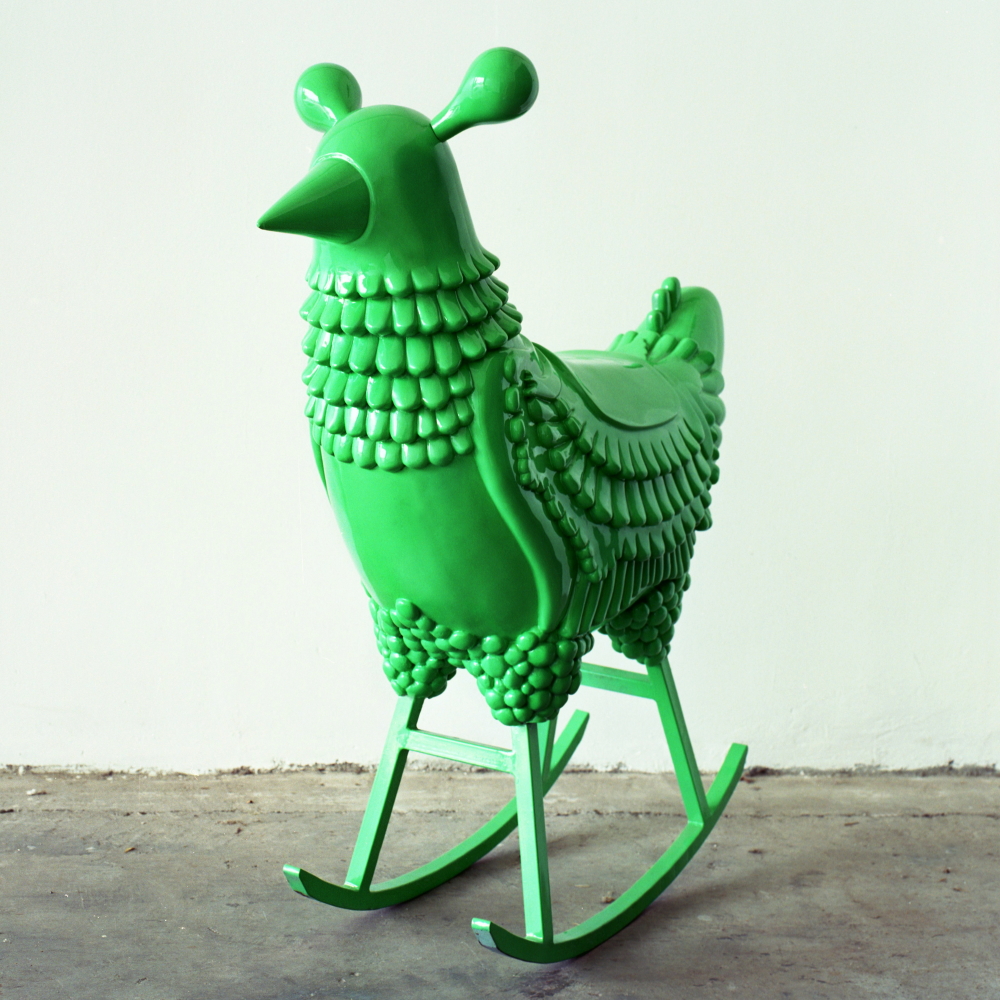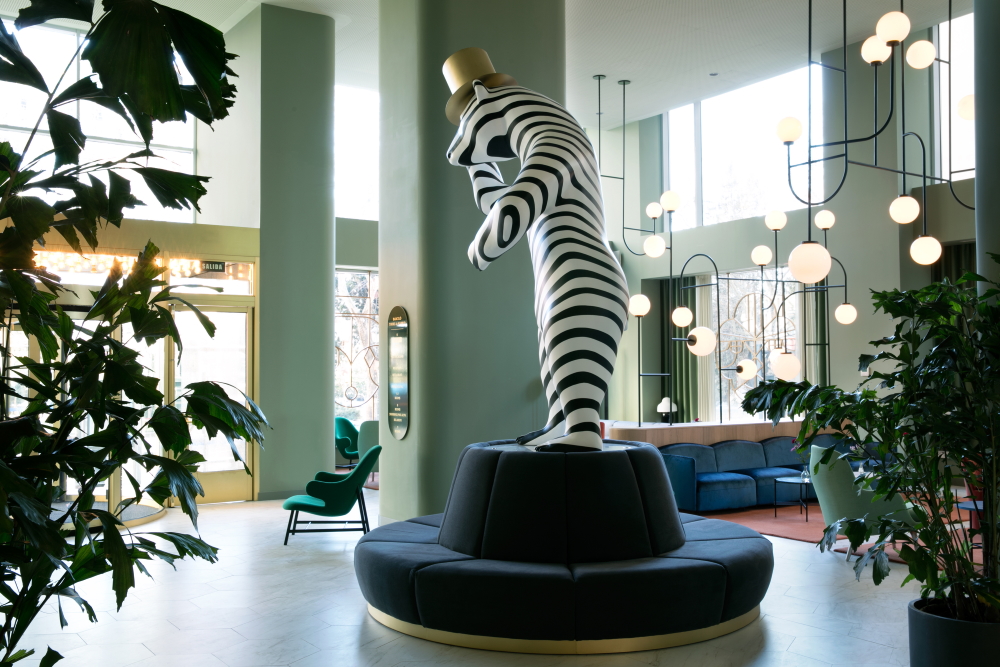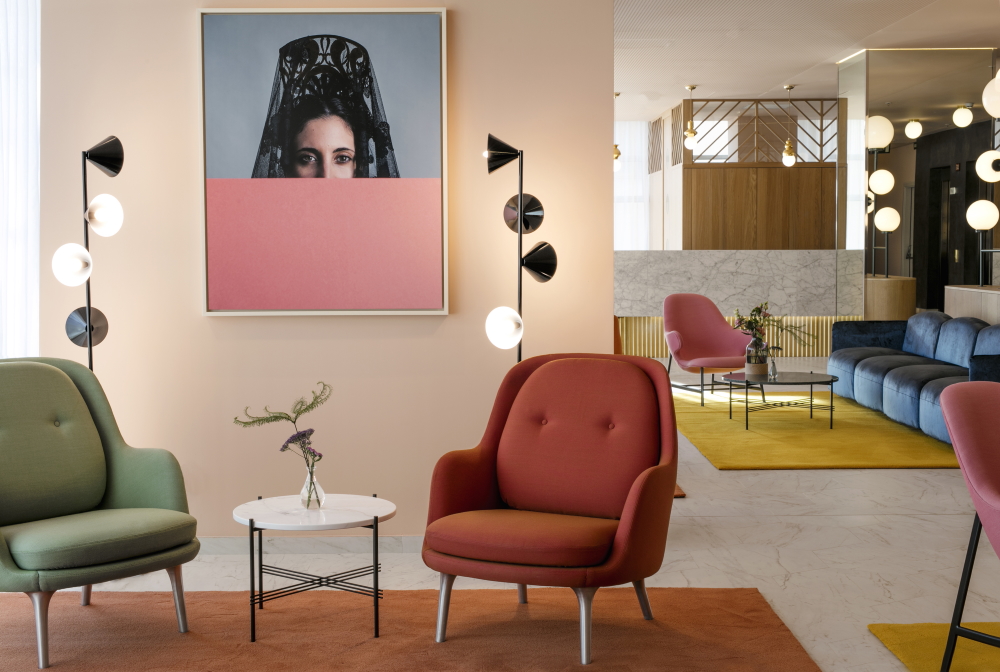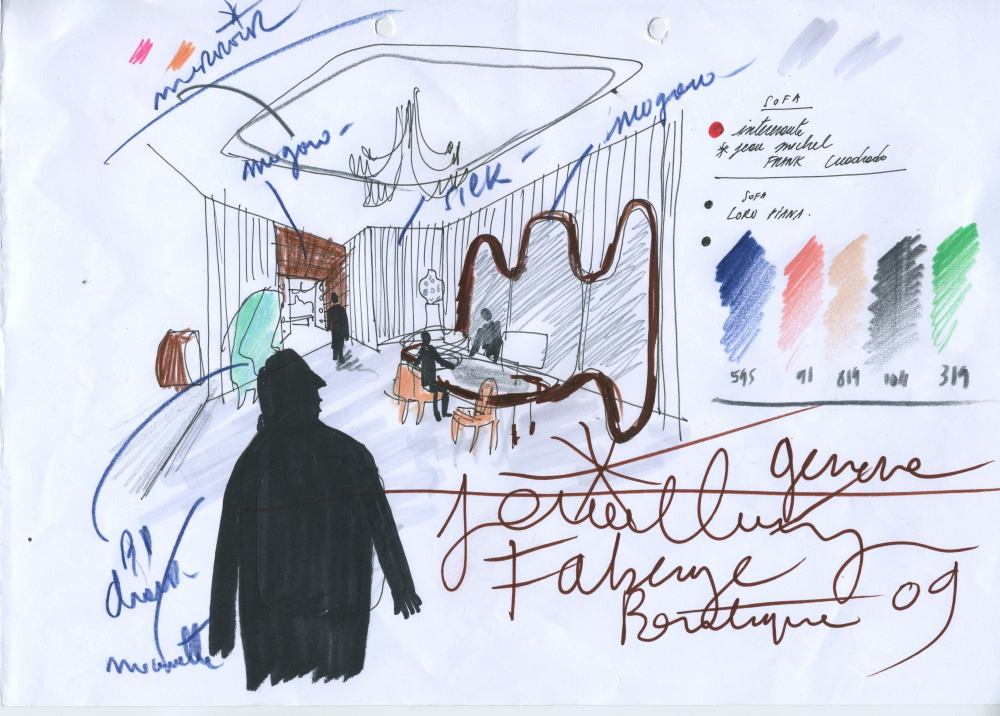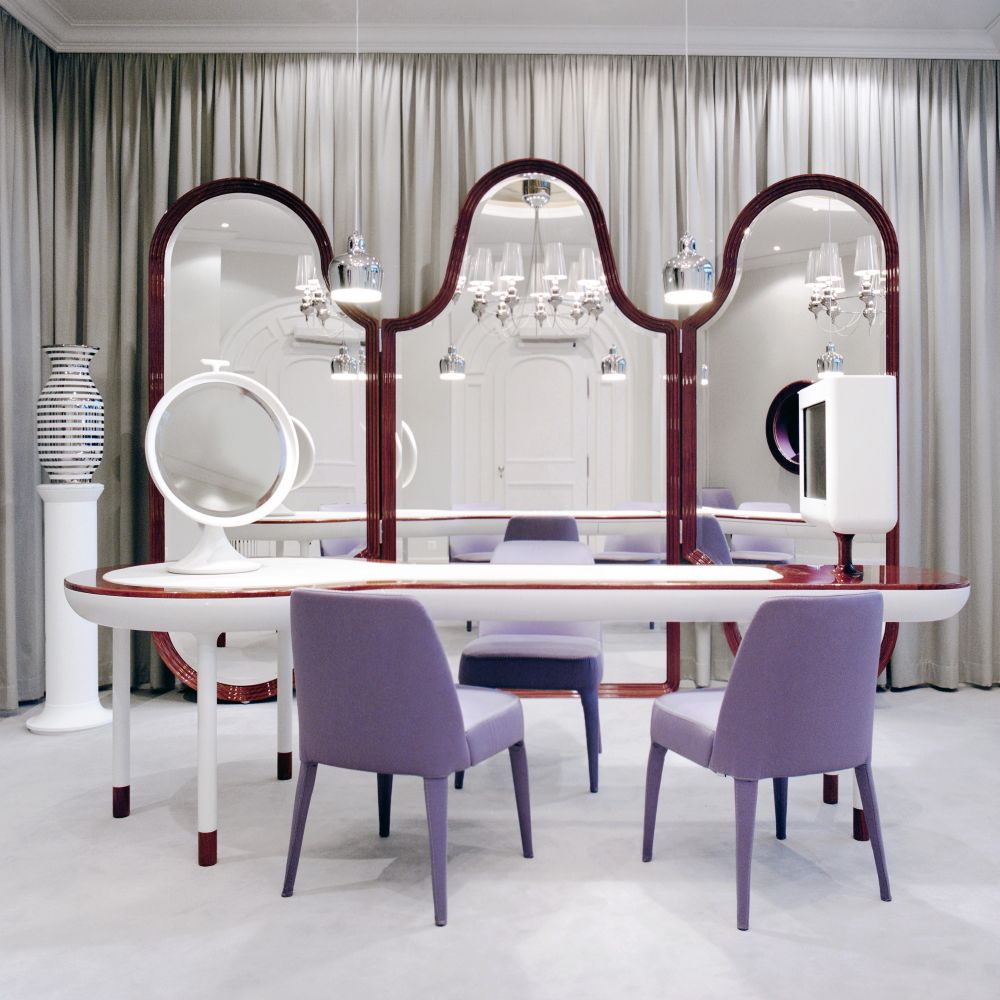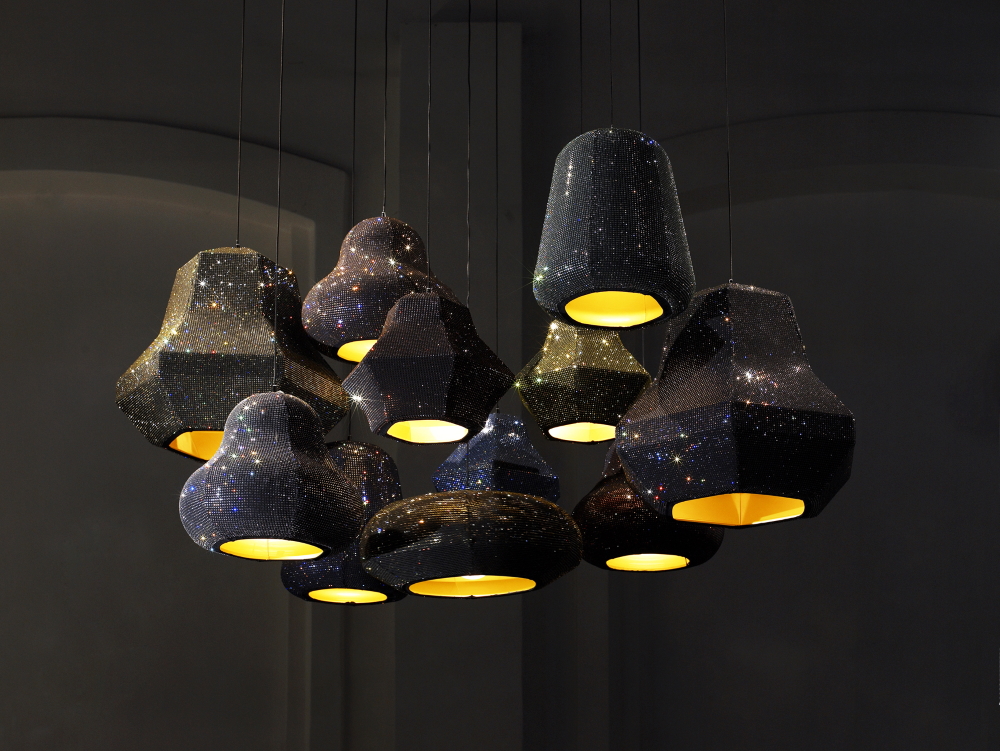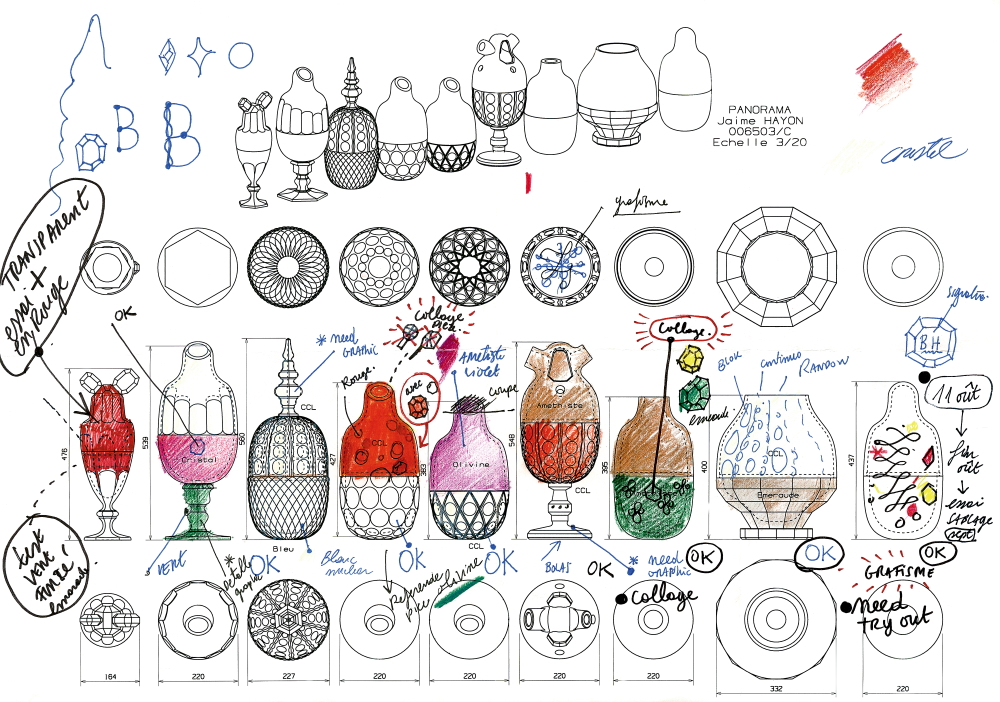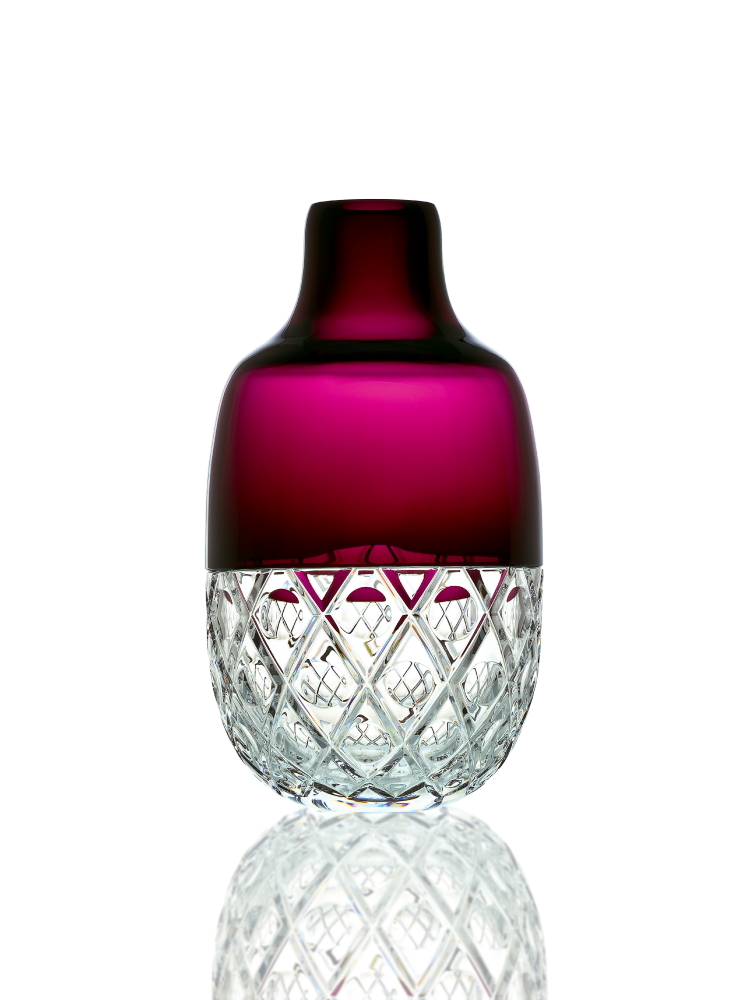Jamie Hayón
artist / product designer
Spain
One of TIME magazine’s „The Style & Design 100“. „One of the design world’s most powerful players“ (Wallpaper Magazine). Repeated winner of multiple international awards by ELLE Decoration. For decoding this all-rounder‘s secret of success the keyword is versatility. He designs domestic furniture, lighting and bathroom fixtures, fanciful figurines and vases in ceramics, wrist watches, fashion, rugs, smartphones, fantastic urban landscapes including vehicles, executes interiors for leading hotels, restaurants as well as retail establishments worldwide, creates unconventional installations and paintings. His style is flexible. It is a balancing act of Pop Art, Baroque and Minimalism that blurrs the lines between art, decoration and design. The „enfant terrible“ (‚Top Magazin‘, Germany) considers himself (according to TIME) „an artist, not a designer!“
Jamie Hayón
artist / product designer
Spain

The circle has been closed for Jamie Hayón. Prior to opening up his own studio, he designed a series of characters for Toy2R in 2002, part of the Art toy movement. 19 years later „the design’s world wizard of wit, whimsey and wonder“ (Wallpaper) was given free reign to conjure up the playground, sculpture garden and library for the Hyundai Museum of Kid’s Books & Art in Seoul (South Korea). In terms of time the journey up to that point seems to have been long, but in reality it was a short one for the bearded man. After all he is considered a shooting star who has had a lightning career.
As a teenager Jamie Hayón (* 1974) was part of the skateboard culture and graffiti art. That laid the foundation for his boldly striking ideas of his work later on. After having studied industrial design in his hometown Madrid and in Paris, he entered Fabrica in 1997. Within a short time the unexperienced newcomer was promoted to head of design at the communications research center for United Colors of Benetton in Treviso (Italy). 2000 saw Señor Hayón founding his own company. The final exit from the multi-disciplinary studio that emphasizes international creative innovation came in 2003 when his imaginative „Mediterranean Digital Baroque“ exhibition was shown in London. From the Spaniard‘s working place in Valencia projects for international clients like Adidas, Baccarat, Cassina, Coca-Cola, Fabergé, Fritz Hansen, Magis, Moooi, Piper-Heidsieck, Swarovski, Zara and many more are completed since then.
In 2021 Jamie Hayón received the National Design and Innovation Award in the Professional category. It was one more proof that the man from Madrid is „a yardstick of Spanish design“ (José Luis Pérez Pont, director of the museums and the Centre del Carme Cultura Contemporània in Valencia).
Works by this creative are part of the collections in galleries and museums like London‘s Design Museum or Centre Pompidou (Paris) among various others. A look into his world is possible by the books 'Jamie Hayon' and 'Jamie Hayon Works'. There this designer’s style is decribed by author Marco Sammicheli in one sentence. „His optimistic aesthetics and bold visual language“, the director of the Museo del Design Italiano in Milan notes, „play with shapes, colours, and recurring motifs.“
Jamie Hayón‘s creative base is in Valencia, with offices in Barcelona and Treviso.
Interview November 2022
Design as an art form: when dreams become reality
INTUITION/IMAGINATION
How does intuition present itself to you – in form of a suspicious impression, a spontaneous visualisation or whatever - maybe in dreams?
Yes, first we dream and then we find the way.
Will any ideas be written down immediately and archived?
I work everywhere! I always have my sketchbook with me and I’m always drawing. I draw things, I make photos of them and I send them all over. It’s really easy to work like that. I have a great team, so it’s not a super hard profession. I go with the flow.
?: How do you come up with good or extraordinary ideas?
I think all of my designs have an element of quality and serious fun. What do I mean by serious fun? I mean it’s not humor for humor’s sake, but the idea that I can bring comfort and enjoyment - and fun and being open to new ideas is part of enjoyment - to someone’s life in a delightful, thoughtful way. I blend this with a high attention to detail and quality, because without those elements the design loses its timeless quality. For me, my designs also have an element of discovery. This aspect of discovery works two ways: one is that I am discovering and challenging new manufacturing methods and materials, and I am always traveling so I discover new cultures and points of view; two is that I also want the user of the product or space to discover new experiences.
I consider myself a creator, and to me, this world encompasses many categories. I like to get my hands into everything that allows me to express myself and think about themes. It’s great to be able to jump from one role to the other. Creativity is not a job; it’s a way of life.
Are great ideas based on intuition and do they reveal themselves in a kind of clear as well complete version that just has to be realized? Or is it endless trials and errors (after the first spark) that result in constant developments up until the final result?
I work with intuition. If my client says „white“, then I go black. And maybe in that black, there's a little bit of white.
INSPIRATION
What inspires you and how do you stimulate this special form of imaginativeness?
There are many things that inspire me. I have a fascination with lost worlds and nature, and I often turn to folklore as an inspiration. When looking at a new project, I establish a theme I’m attracted to – it depends on where I am, and what I see.
Inspiration is everywhere for me and I collect ideas and concepts from travel and new environments.
CREATIVITY
How important are self-doubt and criticism (by others) during such a process i.e. is it better to be creative on your own, only trust your own instincts, or in a team?
I am very critical of my-self and I am always thinking of ways to do things better. Every day my things evolve in a better way. I guess it’s the experience of spending much time in the ateliers with great artisans. I’ve admired and worked close to many different artisans that have great skills. When working with a traditional material or way or making, I find it essential to sit down with the masters and see how they do what they do. This allows me to understand the limits of each material and craft and often try to challenge these but within a respect for there tradition and the potential. From glass cutters, to porcelain sculptors to wood workers, the atelier is always the best place to find ways to enhance your creativity and learn. Therefor dialogue is in the foreground. Only through cooperation do great things come into being.
Should a creative always remain true to him-/herself including taking risks & going against the flow or must one, for reasons of (commercial) survival, make concessions to the demands of the market, the wishes of clients and the audience’s expectations?
I listen to what the client has to say: even though I don’t read the briefs, I carefully listen to what they say and who they are. I consider myself a good listener and at the end of the day when I collaborate with someone, I really do collaborate. I don’t simply impose my will on them, I listen and try to understand what their goals are, and what they want to achieve. Then I think of a theme. I think a project is nothing without a theme. At best the collaboration is a real exchange of knowledge, a dialogue in between my style and their style.
My motivation for design is to design beautiful things for people, to bring up my cosmos into a more democratic scenario, and it all starts with a sketch. And of course I work intensively with the craftspeople. There’s really nothing more beautiful than to challenge a great craftsperson and ask them, “What hasn’t been done before?” and to push the limits.
How is innovation still possible if one has established a distinctive style and, just in case, is it good to be ahead of one’s time even one hazards not being understood?
Hybridity is the mother of innovation. So I put my mind and heart into each new project. I think about it, sketch around it, looking for new things I haven’t seen or new ways to do something, while keeping my own personal voice always there: full of humour, love for quality and tradition, but within the perspective of contemporary times.
SUCCESS
Should/can one resist the temptation to recycle a ‘formula’ one’s successful with?
The more famous and recognized you become in the world of design and art, the more you need to obey this rule.
MY FAVORITE WORK:
The Green Chicken rocking chair: “The chicken, a rather unexplored shape, found its place amongst my green dreams. I wanted to portray this common bird as a sensational object by amplifying its characteristics and dimensions, turning it into a modern piece, one of great beauty and utility: a rocking chair. The movement, subtle and constant, would give the object a zoom-like trait, a sense of speed and dynamism. My green chicken had taken on a face, a shape, a place and a function.”
